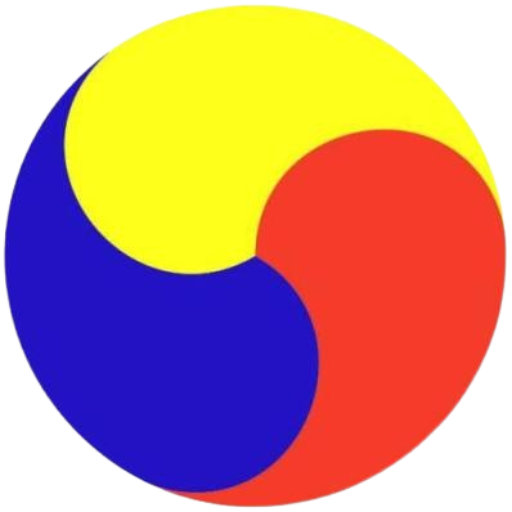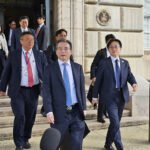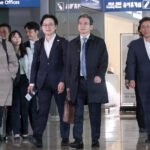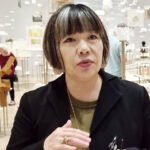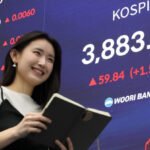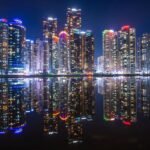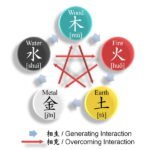
SEOUL—When South Korean President Yoon Suk Yeol shocked his country by declaring martial law earlier this month, he used language plucked straight from the Cold War.
The conservative leader described his political enemies as “antistate forces” and a “den of criminals” that rendered the country vulnerable to North Korean “communist forces.” He hurled phrases like cheo-dan, or punishment, that echo the rhetoric used by the regime of North Korean leader Kim Jong Un to denounce his enemies.
Such language helps explain the deep cleavages that still underlie South Korean politics and that fuel the ruthless battles between left and right here—culminating in the vote Saturday to impeach Yoon, the third South Korean president to lose power in such a move.
The divisions are rooted in the years when South Korea was under military rule, which ended in 1987. During that time, the country was dominated by a string of U.S.-backed strongman leaders who planted the political seeds of today’s ruling party. Meanwhile, the left is still animated by its decadeslong history of sometimes bloody mass protests that ultimately toppled military rule and brought democracy to the country.
South Korea’s legislature voted to impeach President Yoon Suk Yeol over his decision to impose martial law. WSJ’s Korea Bureau Chief Timothy Martin explains what happens now Yoon has been stripped of his presidential powers. Photo: South Korean Presidential Office
The Yoon saga, however, brought a role reversal of sorts. The ruling right—in particular Yoon—has gone from being the party firmly in charge to becoming a perennial target.
“When formerly oppressed parties become unleashed, they start biting back,” said Aram Hur, a political-science professor at the Fletcher School, Tufts University, who focuses on democracy and nationalism. “The South Korean left feels such a vengeance precisely because the right has done this all along to keep them down.”
Yoon’s decision to impose martial law—a move that was overturned in a matter of hours during the night of Dec. 3 by the opposition-controlled legislature—came after the leftist Democratic Party had backed him into a corner politically.
His legislative agenda was at a standstill. The opposition had presented 22 motions to impeach his top appointees and was seeking to set up a special investigation into alleged offenses by Yoon’s wife.
“It’s been a fight rooted less in policy differences, but more in simply disliking the other side,” said Kang Won-taek, a political-science professor at Seoul National University.

The fact that Yoon, 63, reached for martial law was in some way unsurprising. He was a college student when Chun Doo-hwan, a military dictator who rose to power in 1980, imposed it, the last time such emergency powers were declared in South Korea. Yoon once drew criticism for lauding Chun as “good at politics.” He later expressed regret over the remark.
Now Yoon’s own martial-law decision appears to have doomed his career. If the country’s constitutional court upholds his impeachment, Yoon—whose powers were suspended after Saturday’s vote—could be ousted from office by the spring. He would likely face significant time behind bars if he is successfully prosecuted on insurrection charges, among others.
He wouldn’t be the first: Yoon’s two preceding conservative presidents, Park Geun-hye and Lee Myung-bak, were imprisoned. Yoon actually led the investigations that put them away. Both, however, were pardoned. Yoon has vowed to fight until the end, arguing his martial-law decree was an act of governance and not subject to legal scrutiny.

‘Our mortal enemy’
Following World War II, Korea was liberated after 35 years of Japanese colonial rule. The faction that became today’s conservatives advocated for a Western-led global order and close relations with the U.S. and Japan. It held contempt for communism, a stance that spurred more confrontation with the newly separated North and a generally tougher line with China.
The Cold War era produced two long-serving military dictators: Park Geun-hye’s father, Park Chung-hee, who was assassinated in 1979; and Chun, who used a military coup to seize power before formally stepping down in 1988.
Back then, South Korean students competed in yearly “ban-gong”—or anti-Communist—competitions, vying to draw the best anti-North Korean poster or pen the best essay. They would often depict Kim Il Sung, the North Korean leader at the time, as a horned monster and used slogans such as “Let’s beat up the Communist Party!” Medals were awarded for the best work.

“Education was admittedly very skewed: Kim Il Sung was our mortal enemy, he had to be resisted and anti-Communist ideology was instilled in all of us,” said Lee Sung-yoon, who grew up in Seoul in the 1970s and early 1980s and is now a global fellow at the Woodrow Wilson International Center for Scholars, a Washington-based think tank.
Meanwhile, the left advocated warmer ties with Pyongyang, less-hostile relations with Beijing, some skepticism of American power and a more unforgiving stance toward Tokyo. The left rose up in protest of Chun’s martial-law decree in the southwest city of Gwangju in 1980 in a pro-democracy uprising that left many civilians dead at the hands of government forces. Activists hurled molotov cocktails at South Korea’s military, and anger toward the Americans who backed the authoritarian regimes ran high.

After Chun was overthrown, two right-leaning leaders ran the country. South Korea didn’t elect its first left-leaning president until 1997 with Kim Dae-jung, who won a Nobel Peace Prize for his rapprochement with North Korea. Another progressive, Roh Moo-hyun, followed. The country then reversed course with a nearly decadelong rule by Lee and Park Geun-hye, the conservative leaders who ended up in jail.
Park was impeached over an influence-peddling scandal, then ousted in 2017. Her removal propelled South Korea’s left to the powerful role it has today, having never lost control of the National Assembly.
After Park’s ouster, left-leaning Moon Jae-in, the son of North Korean refugees and Roh’s former chief presidential secretary, was elected president. His approval ratings soared above 80% during his first weeks in office.
He quickly took aim at conservative officials in government, launching a purge aimed at “rooting out long-accumulated ills.” That effort left the conservatives off balance. Indeed, the flux can be seen in the party changing names three times in a three-year period before landing on the People Power Party.
Supercharged polarization
Moon and his Democratic Party’s own lofty image started to fade amid scandals involving senior officials. One centered on Moon’s justice minister, whose downfall began after one of his fellow senior administration officials began investigating his children’s academic credentials. That official so happened to be Yoon, who was serving as South Korea’s prosecutor general after helping put Park behind bars. Yoon resigned after falling out with the Moon administration over the probes.
The scandal deeply split the country, which was also grappling with rising economic problems and skyrocketing housing prices. Yoon then joined the conservatives and, in 2022, won South Korea’s narrowest presidential race ever, by a margin of less than 1 percentage point.
Yoon, who had never held elected office before, contributed to the cleavage by refusing for years to meet the head of the Democratic Party. Yoon’s foreign policy also represented a sharp pivot from Moon. He supported closer ties with Japan and the U.S.—even singing a few bars of “American Pie” during a state visit to the White House and scrapping an inter-Korean accord from Moon’s days designed to tone down military hostilities between the North and South.

The only country with stronger partisan conflicts than the U.S., according to Pew Research Center, is South Korea.
The presidencies of both Moon and Yoon supercharged South Korea’s polarization, said Choi Jin, head of the Institute of Presidential Leadership, a private research firm in Seoul. “Both the ruling and opposition parties have neither cooperated nor supported each other,” he said.
But Yoon’s popularity soon sank, and the conservatives were routed in parliamentary elections last April. The opposition ended up with 192 seats of the 300-seat legislature—with one minor party running on a slogan that referred to Yoon’s time left in office: “Three years is too long.” That effectively made Yoon a lame duck, as he was set to become the first South Korean president to go a full five-year term without ever having party control of the National Assembly.
The opposition’s election victory also left it just a handful of votes shy of a two-thirds majority required for an impeachment. It was a notion that seemed far-fetched until this month following Yoon’s call for martial law.
In recent days, more than 90% of South Koreans wanted Yoon to go, according to polling. His approval rate slumped to a record low of 11%.
His most ardent remaining supporters are older South Koreans who embrace unflinching toughness against Pyongyang. On Saturday, just a few hours before the impeachment vote, supporters of Yoon waved U.S. and South Korean flags sewn together. One protester sat in a booth decorated with a poster of two “Transformers” robots in red, white and blue standing in downtown Seoul that read: “We take down the Communist Party!”
“In other countries, polarization is a matter of views on freedom and equality, or progressive or conservative positions on the issue of abortion,” said Choo Mi-ae, an opposition lawmaker and former justice minister. “In Korea, our polarization has deep roots with the past.”
Write to Timothy W. Martin at Timothy.Martin@wsj.com
Write to Jiyoung Sohn at jiyoung.sohn@wsj.com
